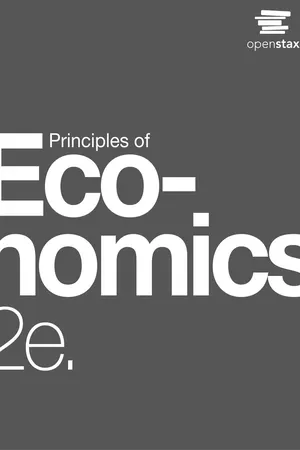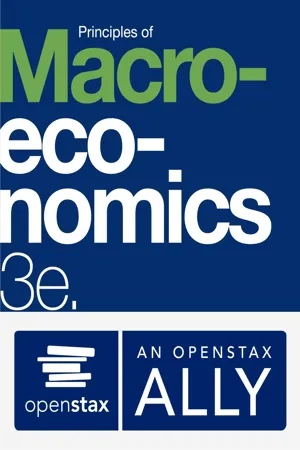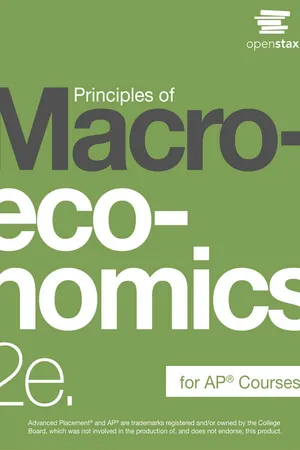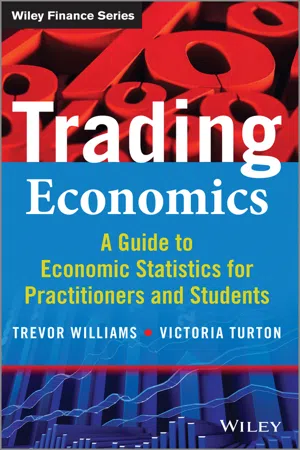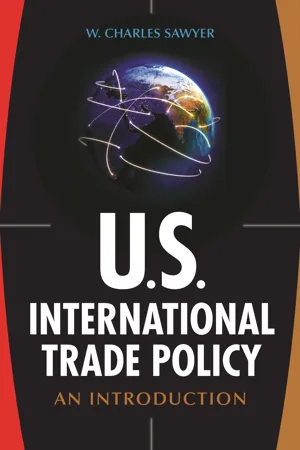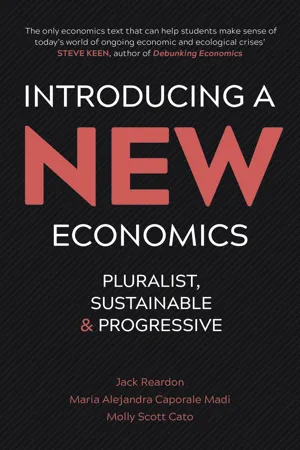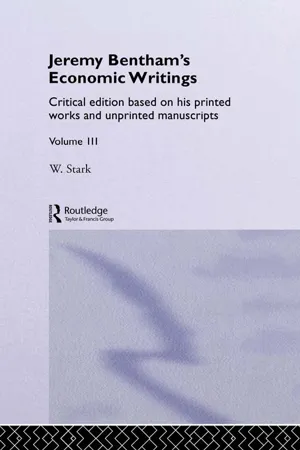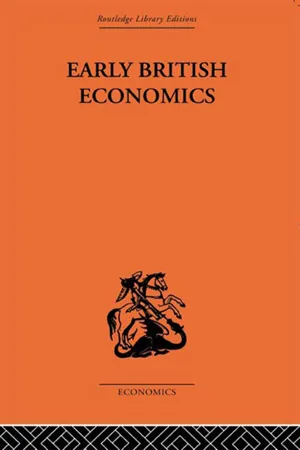Economics
Balance of Trade
Balance of trade refers to the difference between a country's exports and imports of goods. A positive balance of trade, or trade surplus, occurs when exports exceed imports, while a negative balance, or trade deficit, occurs when imports surpass exports. It is an important indicator of a country's economic health and its relationship with other nations.
Written by Perlego with AI-assistance
Related key terms
1 of 5
12 Key excerpts on "Balance of Trade"
- eBook - PDF
- Steven A. Greenlaw, Timothy Taylor, David Shapiro(Authors)
- 2017(Publication Date)
- Openstax(Publisher)
In most high-income economies, goods comprise less than half of a country’s total production, while services comprise more than half. The last two decades have seen a surge in international trade in services; however, most global trade still takes the form of goods rather than services. The current account balance includes the trade in goods, services, and money flowing into and out of a country from investments and unilateral transfers. 23.2 Trade Balances in Historical and International Context The United States developed large trade surpluses in the early 1980s, swung back to a tiny trade surplus in 1991, and then had even larger trade deficits in the late 1990s and early 2000s. As we will see below, a trade deficit necessarily means a net inflow of financial capital from abroad, while a trade surplus necessarily means a net outflow of financial capital from an economy to other countries. 23.3 Trade Balances and Flows of Financial Capital International flows of goods and services are closely connected to the international flows of financial capital. A current account deficit means that, after taking all the flows of payments from goods, services, and income together, the country is a net borrower from the rest of the world. A current account surplus is the opposite and means the country is a net lender to the rest of the world. 23.4 The National Saving and Investment Identity The national saving and investment identity is based on the relationship that the total quantity of financial capital supplied from all sources must equal the total quantity of financial capital demanded from all sources. - eBook - PDF
- Steven A. Greenlaw, Timothy Taylor, David Shapiro(Authors)
- 2017(Publication Date)
- Openstax(Publisher)
In most high-income economies, goods comprise less than half of a country’s total production, while services comprise more than half. The last two decades have seen a surge in international trade in services; however, most global trade still takes the form of goods rather than services. The current account balance includes the trade in goods, services, and money flowing into and out of a country from investments and unilateral transfers. 10.2 Trade Balances in Historical and International Context The United States developed large trade surpluses in the early 1980s, swung back to a tiny trade surplus in 1991, and then had even larger trade deficits in the late 1990s and early 2000s. As we will see below, a trade deficit necessarily means a net inflow of financial capital from abroad, while a trade surplus necessarily means a net outflow of financial capital from an economy to other countries. 10.3 Trade Balances and Flows of Financial Capital International flows of goods and services are closely connected to the international flows of financial capital. A current account deficit means that, after taking all the flows of payments from goods, services, and income together, the country is a net borrower from the rest of the world. A current account surplus is the opposite and means the country is a net lender to the rest of the world. 10.4 The National Saving and Investment Identity The national saving and investment identity is based on the relationship that the total quantity of financial capital supplied from all sources must equal the total quantity of financial capital demanded from all sources. - eBook - PDF
- David Shapiro, Daniel MacDonald, Steven A. Greenlaw(Authors)
- 2022(Publication Date)
- Openstax(Publisher)
The last two decades have seen a surge in international trade in services; however, most global trade still takes the form of goods rather than services. The current account balance includes the trade in goods, services, and money flowing into and out of a country from investments and unilateral transfers. 10.2 Trade Balances in Historical and International Context The United States developed large trade surpluses in the early 1980s, swung back to a tiny trade surplus in 1991, and then had even larger trade deficits in the late 1990s and early 2000s. As we will see below, a trade deficit necessarily means a net inflow of financial capital from abroad, while a trade surplus necessarily means a net outflow of financial capital from an economy to other countries. 10.3 Trade Balances and Flows of Financial Capital International flows of goods and services are closely connected to the international flows of financial capital. A current account deficit means that, after taking all the flows of payments from goods, services, and income together, the country is a net borrower from the rest of the world. A current account surplus is the opposite and means the country is a net lender to the rest of the world. 10.4 The National Saving and Investment Identity The national saving and investment identity is based on the relationship that the total quantity of financial capital supplied from all sources must equal the total quantity of financial capital demanded from all sources. If S is private saving, T is taxes, G is government spending, M is imports, X is exports, and I is investment, then for an economy with a current account deficit and a budget deficit: A recession tends to increase the trade balance (meaning a higher trade surplus or lower trade deficit), while economic boom will tend to decrease the trade balance (meaning a lower trade surplus or a larger trade deficit). - Steven A. Greenlaw, Timothy Taylor, David Shapiro(Authors)
- 2017(Publication Date)
- Openstax(Publisher)
In most high-income economies, goods comprise less than half of a country’s total production, while services comprise more than half. The last two decades have seen a surge in international trade in services; however, most global trade still takes the form of goods rather than services. The current account balance includes the trade in goods, services, and money flowing into and out of a country from investments and unilateral transfers. 9.2 Trade Balances in Historical and International Context The United States developed large trade surpluses in the early 1980s, swung back to a tiny trade surplus in 1991, and then had even larger trade deficits in the late 1990s and early 2000s. As we will see below, a trade deficit necessarily means a net inflow of financial capital from abroad, while a trade surplus necessarily means a net outflow of financial capital from an economy to other countries. 9.3 Trade Balances and Flows of Financial Capital International flows of goods and services are closely connected to the international flows of financial capital. A current account deficit means that, after taking all the flows of payments from goods, services, and income together, the country is a net borrower from the rest of the world. A current account surplus is the opposite and means the country is a net lender to the rest of the world. 9.4 The National Saving and Investment Identity The national saving and investment identity is based on the relationship that the total quantity of financial capital supplied from all sources must equal the total quantity of financial capital demanded from all sources.- eBook - PDF
- Steven A. Greenlaw, David Shapiro, Daniel MacDonald(Authors)
- 2022(Publication Date)
- Openstax(Publisher)
The Democratic Republic of the Congo ran a trade surplus in 2013, as we learned in the beginning of the chapter. Yet its current account balance was –$2.8 billion. However, the return of political stability and the rebuilding in the aftermath of the civil war there has meant a flow of investment and financial capital into the country. In this case, a negative current account balance means the country is being rebuilt—and that is a good thing. CLEAR IT UP BRING IT HOME 23.6 • The Difference between Level of Trade and the Trade Balance 575 Key Terms Balance of Trade (trade balance) the gap, if any, between a nation’s exports and imports current account balance a broad measure of the Balance of Trade that includes trade in goods and services, as well as international flows of income and foreign aid exports of goods and services as a percentage of GDP the dollar value of exports divided by the dollar value of a country’s GDP financial capital the international flows of money that facilitates trade and investment merchandise trade balance the Balance of Trade looking only at goods national savings and investment identity the total of private savings and public savings (a government budget surplus) unilateral transfers “one-way payments” that governments, private entities, or individuals make that they sent abroad with nothing received in return Key Concepts and Summary 23.1 Measuring Trade Balances The trade balance measures the gap between a country’s exports and its imports. In most high-income economies, goods comprise less than half of a country’s total production, while services comprise more than half. The last two decades have seen a surge in international trade in services; however, most global trade still takes the form of goods rather than services. The current account balance includes the trade in goods, services, and money flowing into and out of a country from investments and unilateral transfers. - eBook - PDF
- Steven A. Greenlaw, Timothy Taylor(Authors)
- 2014(Publication Date)
- Openstax(Publisher)
The last two decades have seen a surge in international trade in services; however, most global trade still takes the form of goods rather than services. The current account balance includes the trade in goods, services, and money flowing into and out of a country from investments and unilateral transfers. 10.2 Trade Balances in Historical and International Context The United States developed large trade surpluses in the early 1980s, swung back to a tiny trade surplus in 1991, and then had even larger trade deficits in the late 1990s and early 2000s. As we will see below, a trade deficit necessarily means a net inflow of financial capital from abroad, while a trade surplus necessarily means a net outflow of financial capital from an economy to other countries. 10.3 Trade Balances and Flows of Financial Capital International flows of goods and services are closely connected to the international flows of financial capital. A current account deficit means that, after taking all the flows of payments from goods, services, and income together, the country is a net borrower from the rest of the world. A current account surplus is the opposite and means the country is a net lender to the rest of the world. 10.4 The National Saving and Investment Identity The national saving and investment identity is based on the relationship that the total quantity of financial capital supplied from all sources must equal the total quantity of financial capital demanded from all sources. If S is private saving, T is taxes, G is government spending, M is imports, X is exports, and I is investment, then for an economy with a current account deficit and a budget deficit: Supply of financial capital = Demand for financial capital S + (M – X) = I + (G – T) A recession tends to increase the trade balance (meaning a higher trade surplus or lower trade deficit), while economic boom will tend to decrease the trade balance (meaning a lower trade surplus or a larger trade deficit). - eBook - PDF
Trading Economics
A Guide to Economic Statistics for Practitioners and Students
- Trevor Williams, Victoria Turton(Authors)
- 2014(Publication Date)
- Wiley(Publisher)
And that is not always clear-cut. For example, one of the positives of having a cheap currency is that it can encourage investors to switch production to your economy, as exports from your country are cheaper than those from other countries they could locate in. THE CONCEPT OF THE BALANCE OF PAYMENTS The UK’s balance of payments measures its transactions with the rest of the world. It is one of the most important of the data releases each month and has been known to bring down governments, or at least it has been accused of helping them to lose elections. The balance of payments helps to determine the value of the currency and therefore helps to determine domestic prices of goods and services. It directly impacts living standards, employment and the ability of the country to pay its way in the world and for its people to maintain their standard of living. By measuring economic transactions between the UK and the rest of the world, the balance of payments shows how the net flow of the 200 Trading Economics balance of goods and services between inward and outward activities is funded. It encompasses: ∙ Exports and imports of visible goods, such as cars, food, medicines, capital goods and machinery. ∙ Exports and imports of services such as travel, financial, legal and education. ∙ Net flows of income between the UK and the rest of the world, such as interest earned on investment here and abroad, equity returns, dividends and so on. ∙ Flows such as investment in companies and plant and machinery in the UK and outside by UK firms. ∙ Transfers such as those that take place when migrants in the UK send funds overseas and UK migrants abroad send money back to people in the UK. These are all netted out to show the balance position. What does this mean exactly? Table 7.1 gives an example that follows this trail. In theory, any business transaction must have two sides to it – one thing is exchanged for another of equal value. - eBook - ePub
U.S. International Trade Policy
An Introduction
- W. Charles Sawyer(Author)
- 2017(Publication Date)
- Praeger(Publisher)
The purpose of this chapter is to get you to the point where you can understand that trade balances aren’t really related to international trade policy. It is an unfortunate reality that a lot that is written about trade policy is wrong from the start. At the beginning, there is an assumption that barriers to trade affect overall imports and exports. As we will see in this chapter, that just isn’t the case. This basic misconception does not yield favorable outcomes. International trade policy that is driven by this misconception can lead to unfortunate levels of protectionism. On a more daily basis, it just leads to bad writing about what is happening and how the world works. A really common example of this is every month the government reports the trade balance. Because this number virtually always is a deficit, the overall balance is followed by a discussion of the “causes” of the deficit. With all seriousness the journalist goes on to list the deficit with particular countries. The deficit has now been “explained.” The overall deficit was large because of large bilateral deficits with some of the major trading partners. As we will see later, this is total nonsense. Our main purpose here is to be able to separate trade balances from trade policy. However, a bonus is involved. If you understand trade balances, then you can much better understand the macroeconomics of the United States and other countries.To accomplish our goal, the chapter is divided into four parts. The first part involves learning the jargon of the balance of payments. This material can be tedious but it is essential. A lot of reporting on the world economy involves trade balances, and the jargon of the balance of payments frequently is used in the wrong way. If you have the balance of payments jargon straight in your head, it is a lot easier to understand what you are reading or hearing. The balance of payments is something that is created domestically. Surpluses and deficits are mostly made at home, and the results are something like a residual of production and consumption. An important way that the overall economy interacts with the rest of the world is through importing and exporting goods and services. If one can put imports and exports into a broader context, it really helps one to understand how the overall economy works. This knowledge then allows you to put international trade policy into its proper perspective. It is important and can affect imports and exports, but in a more limited way than is usually thought.The Balance of Payments AccountsJust as a country’s national income accounts keep track of gross domestic product (GDP), savings, investment, taxes, and government spending, the balance of payments accounts keep track of the international transactions. The overall balance of payments includes a number of different important subcomponent accounts. It is composed of the balance on current account, the balance on financial account, and the balance on capital account. The balance on current account is a record of transactions that includes payments for goods, services, and other items described later. The balance on financial account is a record of transactions that includes payments related to financial assets such as bonds. It also includes transactions involving the sale or acquisition of foreign nonfinancial assets like land. The balance on capital account is a record of other activities resulting in transfers of wealth between countries. There is a third component known as the balance on capital account. This includes nonmarket international asset transfers, including debt forgiveness and the transfer of bank accounts by foreign citizens when immigrating to the United States. However, it is normally very small and will be excluded from most of our discussion later. - eBook - ePub
Introducing a New Economics
Pluralist, Sustainable and Progressive
- Jack Reardon, Maria Alejandra Caporale Madi, Molly Scott Cato(Authors)
- 2017(Publication Date)
- Pluto Press(Publisher)
capital account summarises all the capital transfers (claims or inflows and liabilities or outflows) that an economy receives from or provides to the rest of the world in a period of time. Note: capital account liberalisation refers to the removal of controls on international inflows and/or outflows.The Balance of Trade (BoT) is the difference between a country’s imports and exports. The BoT is the largest component of a country’s BoP. Debit items include imports, foreign aid, domestic spending and domestic investments abroad. Credit items include exports, foreign spending in the domestic economy, and foreign investments in the domestic economy. A country has a trade deficit if it imports more than it exports; it has a trade surplus if it exports more than it imports.If a country runs a current account deficit, it will obtain money from other countries, banks, investors, corporations, or even official development flows to finance it. The resulting capital inflows will be registered in the capital account. If the country obtains money from banks or investors, this will increase the sovereign debt of the country in terms of bank credit or assets (bonds). In the future, the country will have to pay back this debt.On the surplus side, China is the largest trade surplus country in the world, passing Japan after 2005. Surpluses also exist in Germany and other Central and Northern European countries. The US is the largest deficit nation. According to the IMF, the preponderant factor was the decline in US saving, given the large budget deficits, forcing the US to borrow from abroad reflecting a deep deterioration in public saving. The deficit is also affected by each citizen’s economic and financial asset choices: do we buy from home or abroad? Locally or globally?16.4 THE LINK BETWEEN MONETARISM AND EXCHANGE RATES
According to monetarism,3 it is assumed that the demand for money is stable, and is an increasing function of income; specifically, as income increases we demand more money in order to finance more transactions. Monetarism also assumes that the aggregate money supply is the most important economic variable, directly affecting the level of output and employment. Putting these two statements together: if the economy is at full employment, then increasing the supply of money will only increase the nation’s price level, with no effect on output. This important relationship is known as the quantity theory of money - eBook - ePub
Jeremy Bentham's Economic Writings
Volume Three
- Werner Stark(Author)
- 2014(Publication Date)
- Routledge(Publisher)
OF THE Balance of Trade OF THE Balance of Trade[RE-TRANSLATED FROM THE FRENCH VERSION OF E. DUMONT ]1801[TABLE OF CONTENTS ]Chapter I. Erroneous Notions concerning the Balance of Trade. Chapter II. In what Sense it may be True that the Balance is Favourable or Unfavourable. Chapter III. The Question of Expediency Examined. Erroneous Assumptions entertained by the Mercantile System. Chapter IV. The Question of Fact Examined. Erroneous Assumptions in the Mercantile System. Chapter [V.] The Examination of the Question of Fact continued. The Error of the Fundamental Assumption on which the Mercantile System is based. Chapter [VI.] The Question of Expediency Examined. An Abundance of Money as a Means of Influence in the Relations between State and State. Chapter [VII.] Objections of Adam Smith concerning the Balance of Trade. Chapter [VIII.] Source of the Error. Chapter [IX.] The Absurdity of the Aim proposed by the Mercantile System. Chapter [X.] A Possible Case of Unfavourable Balance.CHAPTER I.ERRONEOUS NOTIONS CONCERNING THE BALANCE OF TRADEB Y Balance of Trade is meant the excess, in terms of value, of the goods exported out of the country over the value of the goods imported. Such a balance, where it exists, is called a favourable balance. If it appears from the books or registers to which reference must be made and from which the proofs available in this matter are to be drawn, that the excess is on the side of the imports, the balance is regarded as unfavourable.A reader not already forewarned and cognizant of current opinion would at first be inclined to suspect a misprint in these words. Among the hundreds of thousands of individuals who are engaged in trade, there is not one who would not regard his business as better in proportion to what comes in, and worse - Available until 8 Feb |Learn more
- L Engelbrecht, A Strydom, L Engelbrecht, A Strydom(Authors)
- 2014(Publication Date)
- Future Managers(Publisher)
2.1 The Balance of Payments account The BoP consists of FOUR main sections. These logically set out the flows of money for different transactions. Current account Arguably the most important account and the one that gets the most scrutiny in the media is the current account. This account records the flows of money relating to trade, income and current transfer flows. Before illustrating the layout of the Current account, the following components need some explanation: • The trade balance: This is the difference between merchandise (goods) exports and merchandise imports. When a country imports more goods than it exports it will have a negative trade balance. The trade balance ultimately has a big impact on the overall current account as trade in goods has the most value on the current account. • Balance of Trade in goods and services: South Africa is increasingly exporting services such as banking and finance, insurance and media services. This is a sign of economic development. When the net effect of imports and exports of services is derived, this can be added to the trade balance to determine the Balance of Trade in goods and services. The extract below compares the current account of South Africa from 2005 till 2012. http://www.resbank.co.za/Lists/News%20and%20Publications/Attachments/5608/10Statistical%20tables%20-%20International%20 economic%20relations.pdf It is noticeable that net gold exports are recorded as a separate item. Gold, although of reduced export significance in recent years, is a strategic resource for South Africa. Its importance as an international commodity necessitates that the figure is recorded separately so that the trend can be easily identified. The figures also show that a negative trade balance has been maintained over the entire period as merchandise exports have been less than merchandise imports. Service receipts records the income earned from exporting services. - Max Beer(Author)
- 2013(Publication Date)
- Routledge(Publisher)
The overvallue of our Englishe wares will yearly bringe in Emporyall and French Crownes, for they are corrante heare, whereby this Realme shall be enriched.” 1 Finally, William Lane, a London merchant, writing to Sir William Cecil, reiterates the general complaint that “the bringing in of superfluous commodities, do exsede in valewe the rychness of our commodity,” was impoverishing the realm; he therefore proposes, that it should be “broughte to passe that the commodytys of owre Realme and the travyll of owre pepull solde in forin contres maye exsede in valewe the foreign commodytys broughte in, and so much shall owr commonwelthe be yerely gainers of them, and they not of us, and we to lyve off them and they not off us, and owre Reme so much inrychyd with their money and also keepe owre coyne still.” 2 2. Rise of the term “Balance of Trade” Out of the proposals of the merchants, and not of those of the scholars and statesmen, arose the Balance of Trade doctrine. The term was gradually evolved in the first fifteen years of the seventeenth century. The terms “balancing” and “balance” were known to book-keepers in the second half of the sixteenth century. They signified “reckoning” up the columns debitor and creditor and bringing “concordance” between them. In that sense they are used by John Mellis, a schoolmaster in Southwark, in his Briefe Instruction and Manner how to keepe books of Accounts after the order of Debitor and Creditor. The booklet was published in 1588 and is still worth reading by economic historians. There is no pagination, but short numbered chapters. The above-mentioned terms are to be found in chapters 10, 21, 22. Mellis knew also the term “capital,” but only in the sense of a stock of commodities, with the exclusion of money, which, in book-keeping, Mellis called Capsa, a chest
Index pages curate the most relevant extracts from our library of academic textbooks. They’ve been created using an in-house natural language model (NLM), each adding context and meaning to key research topics.
